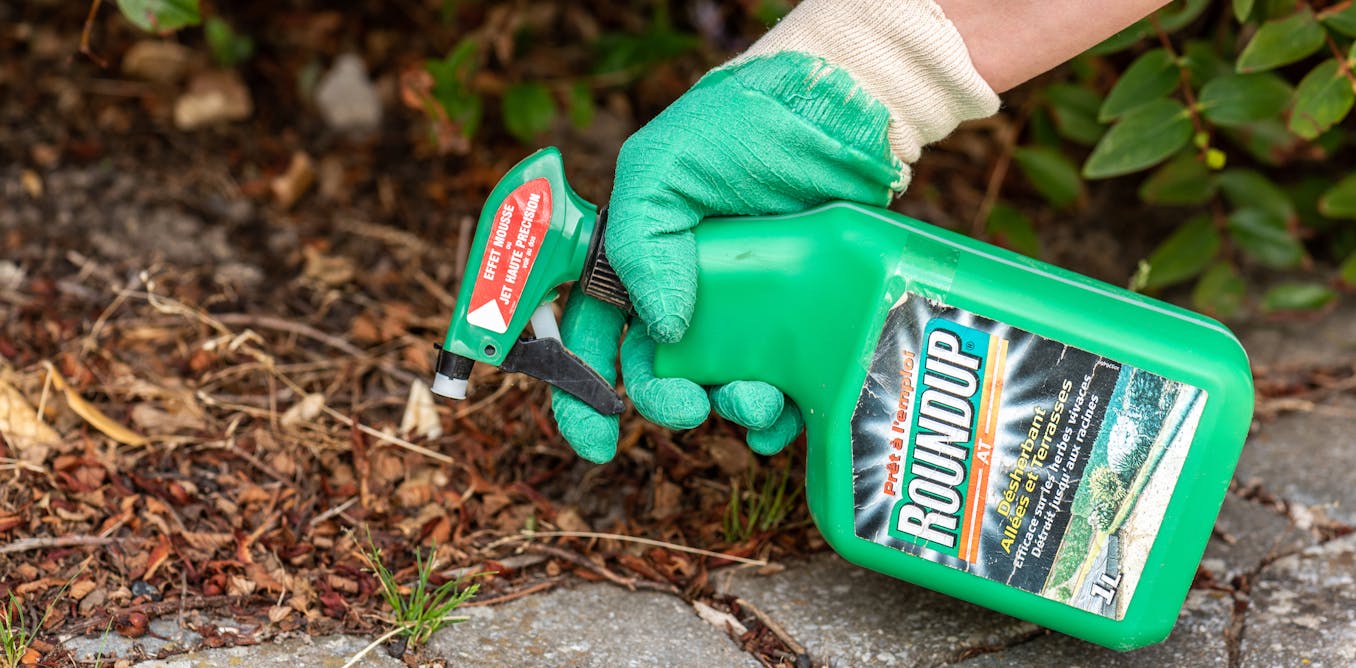A major Federal Court class action was thrown out this week after Judge Michael Lee ruled there was not enough evidence to prove the weed killer Roundup causes cancer.
Plaintiff Kelvin McNickle, now 41, developed non-Hodgkin’s lymphoma after using glyphosate (the active ingredient in Roundup) in his family’s vegetation management business for more than 20 years.
More than 800 others joined the class action against the German chemical and pharmaceutical company, Bayer, which makes Roundup. Bayer has long maintained that glyphosate does not cause cancer, despite a number of court cases around the world. He said this week’s decision was a “victory for Australian farmers”.
The court acknowledged that the scientific community had mixed views on whether glyphosate causes cancer. Judge Lee looked at three types of scientific evidence – epidemiological, animal studies and evidence showing the mechanisms involved in the development of cancer – in his decision.
However, in 2015, the International Agency for Research on Cancer (IARC) classified the herbicide as “probably carcinogenic to humans”.
So what does the science say?
What is glyphosate?
Glyphosate is one of the most widely used herbicides worldwide, and has been used in agriculture, public parks and pathways, and home gardens in Australia for more than 40 years.
It kills weeds by targeting a specific pathway (the shikimic acid pathway) that exists in plants and a type of bacteria (eubacteria), but not animals (or humans).
In terms of short-term exposure, glyphosate is less toxic than table salt. For example, a 70 kg person would need to eat a quarter of a kilogram of table salt in order to die, but would need to eat about half a kilogram of glyphosate to die.
However, it is chronic or long-term exposure to glyphosate that is causing controversy.
What does ‘probably carcinogenic’ mean to humans?
Those who believe glyphosate causes cancer often refer to the 2015 International Agency for Research on Cancer (IARC) report that classified the herbicide as “probably carcinogenic to humans.” This was based on:
convincing evidence that these agents cause cancer in laboratory animals.
However, IARC reached its conclusion using a narrower evidence base than other peer-reviewed documents and government reviews. Also, unlike other regulatory bodies, it marks any OPPORTUNITIES cause cancer, instead of DANGER from reliable exposures.
The joint Food and Agriculture Organization/World Health Organization meeting on pesticide residues report in 2016 concluded that glyphosate was unlikely to pose a carcinogenic risk to humans from dietary exposure.
Contrary to the IARC’s confident conclusion that glyphosate had convincing evidence of causing cancer in laboratory animals, the joint meeting concluded:
glyphosate is not carcinogenic to rats, but could not rule out the possibility that it is carcinogenic to rats at very high doses.
Australia’s regulator, the Australian Pesticides and Veterinary Medicines Authority, reviewed the safety of glyphosate following the IARC determination and concluded:
there is no reliable evidence that products containing glyphosate pose a risk of causing cancer in humans.
What have epidemiological studies found?
IARC considered ten cohort studies, where research participants are studied over a period of time, and nine case-control studies, where people who have the disease are compared to groups who do not have the disease, to try and identify possible causes. There was no evidence of a cancer link.
However, three small studies suggested an association with non-Hodgkin’s lymphoma, but this association was not statistically significant. This means that the association may have occurred only by chance.
Hair/Shutterstock
A 2016 meta-analysis, which reviewed all the evidence available at the time, suggested a small but not statistically significant association of glyphosate with non-Hodgkin lymphoma, but no causal link was established.
In 2018, the Agricultural Health Survey was published. This was a longitudinal study of 54,251 participants licensed to use glyphosate, where their exposure could be followed. This robust study, which controlled for a number of factors that could have confounded the conclusion, found no statistically significant association with glyphosate use and cancer in any country.
What does animal research say?
There have been numerous animal studies of glyphosate and cancer. In these studies, rodents are typically exposed to high but sublethal concentrations for at least 80% of their total lifespan. These concentrations will be higher than humans can be exposed to.
In the European Food Safety Authority’s review in 2015, there were nine studies on mice where no cancer was seen.
There were also five mouse studies in the above review. Of these, three were negative. One found sporadic tumors that were not dose dependent (indicating that glyphosate was not the causative agent). In the other study, the researchers found tumors at the higher doses only in men.
Animal studies show no consistent evidence of cancer development and no human non-Hodgkin lymphoma equivalent was seen. Therefore, the European Food Safety Authority concluded that glyphosate was unlikely to be a carcinogenic risk to humans.
Read more: Check the research: should we be worried about glyphosate in our beer and wine?
In the 2015 International Agency for Research on Cancer (IARC) report that classified the herbicide as “probably carcinogenic to humans,” there were six studies on mice. Cancer was seen in only one study, but again this was not dose dependent. This indicates that glyphosate was not the causative agent.
There have been two mouse studies; one was negative and the other found a “trend” for a cancer that forms in glandular tissue in men but not in women.
No human non-Hodgkin lymphoma equivalent was seen.
While the IARC considered that there was sufficient evidence of cancer-causing in animals, there was no consistency in tumor type (mouse vs. mouse) or location.
What mechanisms might be involved?
There are a number of ways that chemicals can cause cancer, usually through damage to DNA or chromosomes.
For glyphosate, there is little evidence that these classical mechanisms are involved.
Bacterial mutation studies looking for bacterial DNA damage have been negative, mutation studies in mammalian cell lines have been negative, chromosomal damage studies have been mostly negative. These studies involve concentrations and routes of exposure that humans will never encounter.

Paul Maguire/Shutterstock
Oxidative stress occurs when there is an imbalance of toxic free radicals and antioxidants in your body that leads to cell damage. Oxidative stress is involved in cancer, and it has been suggested that oxidative stress may be a plausible mechanism for promoting cancer. While this damage may be implicated in causing cancer, it may also be part of the mechanism the body uses to fight cancer.
However, while oxidative stress has been shown in cell studies and animal studies of exposure to glyphosate, the levels were much higher than humans are exposed to.
While glyphosate exposure can alter markers of oxidative stress in humans, these changes are relatively small. Given the lack of evidence for cancer induction in animal studies and human epidemiology, the significance of these small changes is unclear.
Above all, there is currently no plausible mechanism for glyphosate to cause cancer at the levels of glyphosate to which humans are likely to be exposed.
